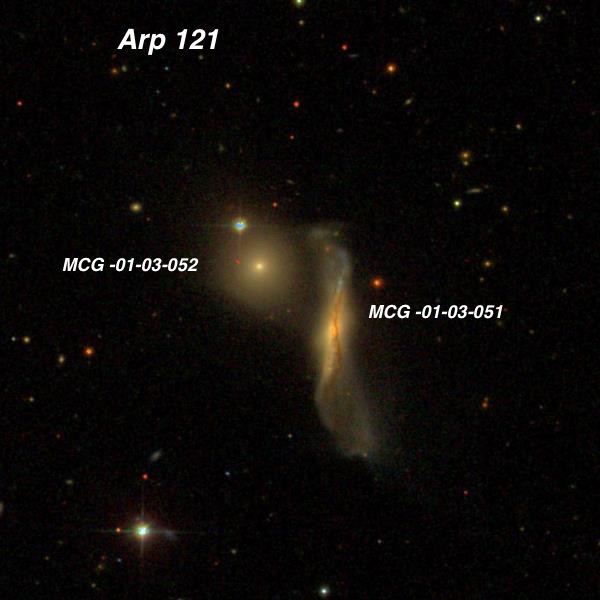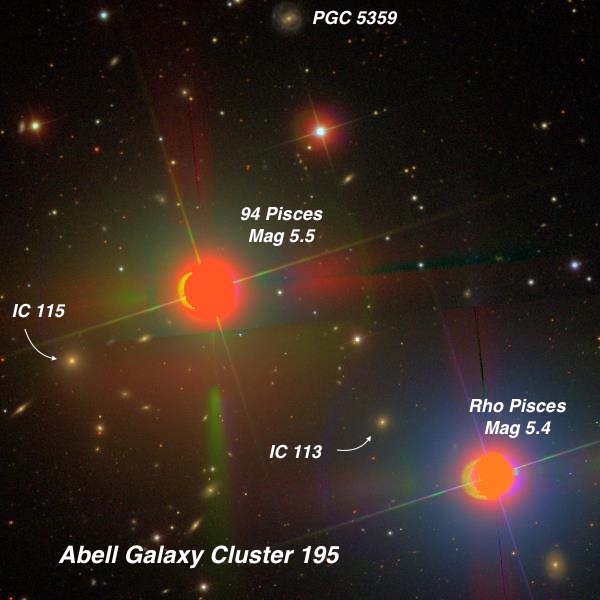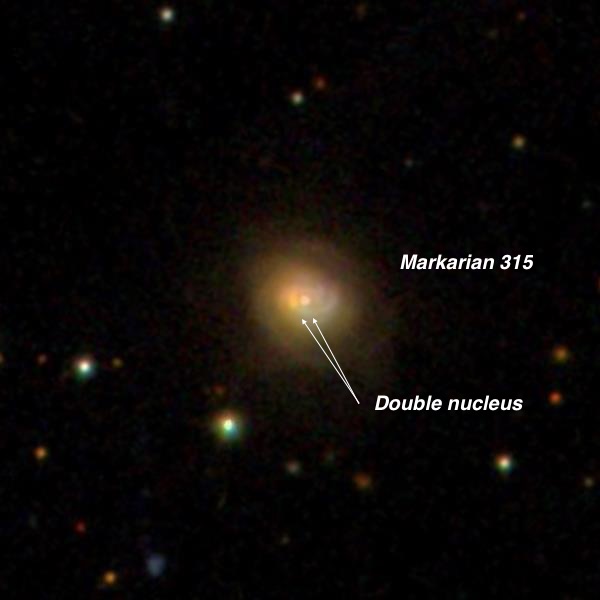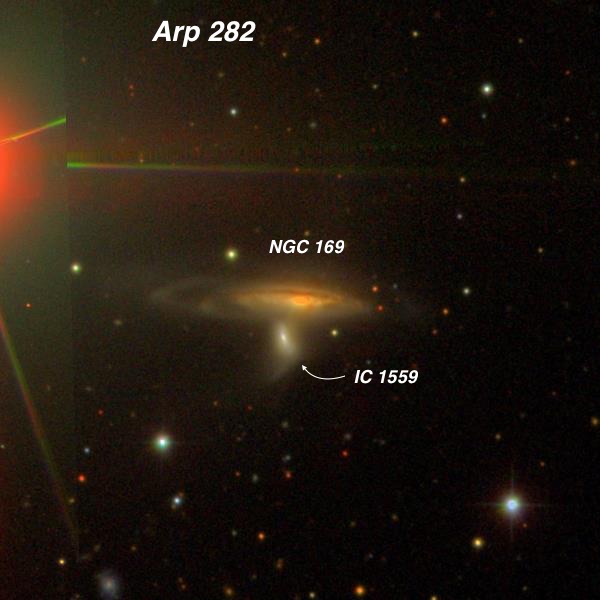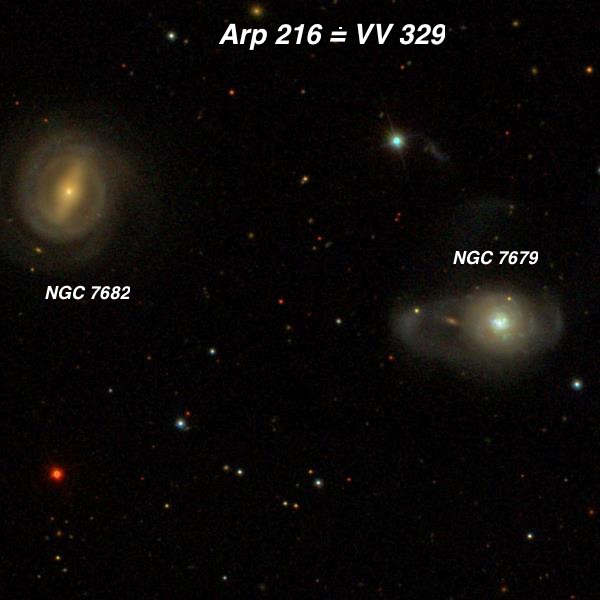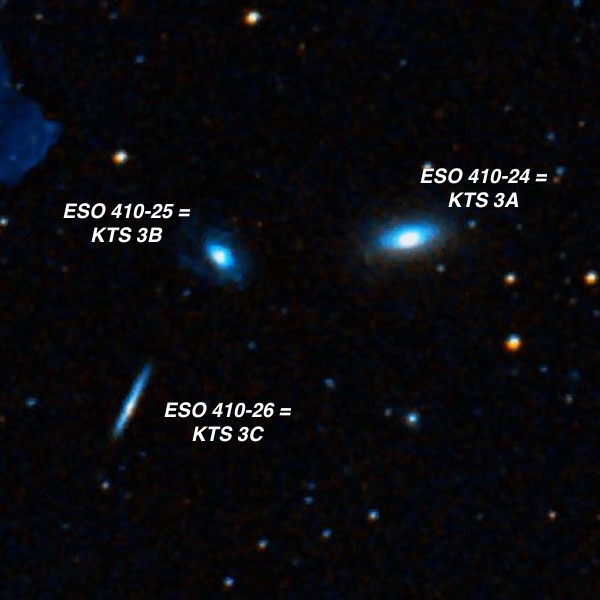OR: Three fine nights at the Calstar Star Party
by Steve Gottlieb
|
In late September I attended the 17th annual CalStar star party in the central California coastal foothills. With roughly 100 participants from both northern and southern California, this star party has a more intimate feel than the Golden State Star Party – basically a large tribal get together of astro-nuts. In past years, we’ve had to suffer through some miserably hot days, but this year the temperature was quite pleasant during the daytime and clear star-filled nights. This is a three-night star party, so poor weather on one or two nights can really impact the viewing hours, but we were fortunate to have three all-nighters in pretty good conditions. I found the seeing soft early on — though partly this was due to my 24-inch mirror cooling off – but it generally became fairly good by midnight and in fact I resolved an 0.5” double (72 Pegasi) on the first night at 750x! As far as transparency, the skies were a bit disappointing to me early on (21.3 SQM readings), but hit 21.5-21.6 after 1:00 AM. That, in combination with the seeing, allowed me to push my 24-inch f/3.7 pretty deep. A final tally showed I logged notes on 106 objects over the three nights. I started off each evening observing a few clusters, globulars and planetaries within the summer Milky Way but we’ve no transitioned to the Fall skies so I quickly moved into the galaxy rich fields of Sculptor, Pegasus, Pisces and Cetus. Here’s a sample of the more interesting targets. — Steve Gottlieb |
|
Arp 121 = MCG -01-03-051 and -052 Arp 121 is an interesting pair of interacting galaxies in Cetus. The eastern galaxy, MCG -01-03-052, appears as a relatively normal-looking elliptical. But the western component, MCG -01-03-051, is highly warped with a tortured appearance. A faint haze of gas and stars appear to connect the pair. Here is Arp’s published image with the Palomar 200”. He considered (based on appearance) that MCG -01-03-051 was tidally disrupted by its elliptical companion. Visually Arp 121 is an attractive, close pair. MCG -01-03-051 was moderately bright and large at 322x, very elongated 3:1 N-S, 1.0'x0.3'. MCG -01-03-052, the fainter companion, is just 50” NE. It appeared fairly faint, round, 18" diameter, slightly brighter nucleus. A mag 13.8 star is at the NNE edge [20" from center].
AGC 195 This pair of IC galaxies lies in the rich cluster Abell 195 at a distance of roughly 585 million light years. But what really makes them a challenge is their location — in the glare of two 5th magnitude stars!! Surprisingly, the two galaxies were accidentally discovered visually by Sherburne Wesley Burnham, observing with the 36-inch refractor at Lick Observatory in July of 1890. He wasn’t searching for galaxies (“nebulae” in those days), but rather examining the two bright stars to see if they were possibly doubles! Turned out they weren’t but he did report the discovery of the two objects in the same field. IC 115, just 3.4' SE of mag 5.5 94 Pisces, was the easier of the pair in my 24-inch and readily seen at 375x as fairly faint, slightly elongated, 20" diameter, fairly even surface brightness. IC 113, situated 2.7’ NE of mag 5.4 Rho Pisces, was faint, round, 15" diameter, low surface brightness. The stars, of course, created a major distraction, so the best views were to move them just outside the field of my view (my scope was tracking) and view each galaxy individually! I also picked up PGC 5359 6' NNW of of 94 Pisces. Although further away from the glare, it was the dimmest of the trio (B = 16.3).
Mrk 315 = II Zw 187 This is pretty unimpressive galaxy visually. At 375x it appeared as fairly faint, round, compact 15"-18" glow of high surface brightness with a very small brighter nucleus. A companion (CGCG 475-031) was picked up 6’ SE. But Markarian 315 has a monster at its center. Since the early 1970’s, it's been known to house an active galactic nucleus (Seyfert 1.5 nucleus). A highly ionized, collimated jet of gas extends from the nucleus at high speed in O III and H-alpha. This gas is connected to a giant filament. The nature of this filament was uncertain but a 1993 study with the HST revealed a double nucleus. A press release stated, "The Hubble images provide support for the theory that the jet-like feature may be a 'tail' of gas that was stretched out by tidal forces between the two galaxies as they interacted". An image of the core of Markarian 315, taken with the Hubble Space Telescope's Wide Field and Planetary Camera (in planetary camera mode), shows a second, fainter nucleus located approximately 6,000 light-years (or two arc seconds in angular separation) from the galaxy's bright central nucleus. The brighter of the two nuclei is the energetic core of Markarian 315 and probably contains a massive blackhole. The fainter nucleus is considered to be the surviving core of a galaxy that recently merged into Markarian 315. This observation best explains the extraordinary 240,000-light-year long jet-like feature of Markarian 315. The jet feature is most likely a remnant of a merger between Markarian 315 and a smaller galaxy”.
NGC 7556 = MCG -01-59-009 = PGC 70855
The closest companion is NGC 7556A at the southwest edge of the halo — just 19” southwest of center! At 500x NGC 7556A appeared extremely faint and small, round, ~8" diameter. Next in order of separation is NGC 7554, just 48” west of center. I found this galaxy fairly faint, small, round, 15" diameter. LEDA 195267 (V magnitude ~14.7), 1.4’ to the southeast, appeared fairly faint, small, round, 15” diameter. LEDA 195265 (V magnitude ~15.3), 3.3’ SSE, was a difficult object only 6" diameter. William Herschel discovered NGC 7556 on 20 Sep 1784 with his 18.7-inch speculum reflector and missed the fainter companions. Albert Marth, using a 48-inch fork-mounted speculum reflector, picked up NGC 7554 in August of 1864 from the mediterranean island of Malta. LEDA 195267 was likely observed in 1850 using Lord Rosse’s 72-inch Leviathan, but he was not positive of the observation and without a confirmation this small galaxy missed out in receiving a NGC designation.
Arp 282 = NGC 169 + IC 1559 This photogenic interacting pair is located in Andromeda just 3.8' southwest of a mag 6.2 star (upper left edge of this SDSS image). It appears we’re peering just below the plane of a distorted edge-on spiral (resembling a UFO?) – particularly the tidally disturbed arms or rings stretching to the left (east) and a nucleus that is offset towards the west side. The companion IC 1559 (also known as NGC 169A) is also tidally disrupted, with a plume extending to the southeast and the major axis is nearly perpendicular to NGC 169. NGC 169 is fairly bright, elongated 5:2 E-W, ~0.8'x0.3’. It contains a small, bright elongated core that increases to a stellar nucleus. IC 1559 sits at the south egg, just 22" between centers. The companion appeared fairly faint, small, slightly elongated ~N-S, 15" diameter, faint stellar nucleus.
NGC 7587 + NGC 7587B NGC 7587 is another disrupted spiral with a curving dust lane and a warped disc. The companion NGC 7587B is highly disturbed and possibly a merging pair itself. An apparent tidal tidal extends to the northeast and knots of blue star-forming regions line the northern side of the galaxy. NGC 7587 appeared fairly bright, very elongated 3:1 NW-SE, ~50"x18", high surface brightness, with a small bright core. A mag 11 star lies 2.5' NE. NGC 7587B (also known as CGCG 406-051) is 51” to the south. The companion was very faint, small, elongated 2:1 SW-NE, 20"x10”. This region of Pegasus is filled with galaxies. Hickson 95 (brightest member NGC 7609) lies 25’ southeast.
He 2-428 = PK 49+2.1 = PN G049.4+02.4 Unfortunately, this unusual-looking planetary (the image above was taken by the VLT) in Aquila was only seen as a faint "soft" glow, roughly 6" diameter. It dimmed with an OIII filter, though was visible with an NPB filter, but the contrast was improved. The best view was at 375x unfiiltered; it was very easily seen as a round, sharp disc. The central star often sharpened to a point. So what makes He 2-428 special? Often remarkable bipolar shapes seen in planetaries are thought to result from the interaction of a binary central star. In March 2015 it was announced that He 2-428 has a pair of white dwarf central stars! The combined mass is above the Chandrasekhar limit (limit of a stable white dwarf) and the pair is predicted is merge into a single star is roughly 700 million years and explode as a Type 1a supernova. This is the first candidate for such a binary double white dwarf star merger/Type Ia supernova known! I first observed this planetary back in 1994 and noted the weak OIII filter response (I’m not aware of any earlier amateur observations), but this headline caught my attention last year: "Astronomers Discover Close Pair of White Dwarfs in Center of Planetary Nebula Henize 2-428."
UGC 12578 + UGC 12589 = VV 613 + VV 492
At 375x, UGC 12578 appeared faint, fairly small, elongated 3:2 ~E-W, ~30"x20", low even surface brightness (surprisingly faint). UGC 12589, 12’ to the northeast, was also very faint, very elongated 5:2 or 3:1 SW-NE, 30"x12", very low surface brightness.
Arp 216 = VV 329 = NGC 7679 + NGC 7682 NGC 7679 is a relatively nearby face-on SB0 peculiar. It’s been classified as a luminous infrared Seyfert 2 galaxy experiencing both starburst and AGN activity. It appears surrounded by a ring of stars and gas with a condensation (captured dwarf companion?) on the east end. NGC 7682 is an apparently undisturbed SB(r)ab spiral, but it also houses a Seyfert 2 nucleus. I found NGC 7679 fairly bright, round, 25"-30" diameter, high surface brightness. It contains a small intense core that increases to a faint stellar nucleus. Burnham 1222, a close 1.4" pair of mag 10 stars, lies 5' NW and this pair was cleanly resolved at 375x. NGC 7682 was moderately bright, elongated 4:3 NNW-SSE, ~32"x24", bright elongated core (central bar).
KTS 3 = Arp-Madore 0033-280 The KTS catalogue is a southern extension of the KTG Isolated Triplets of Galaxies by husband and wife astronomers Valentina Karachentseva and Igor Karachentsev. The 1979 KTG contains 84 northern hemisphere trios found by visual inspection of the Palomar Observatory Sky Survey plates. They considered a group “isolated" if the nearest “significant” neighbor was at least three times as far away as the separations of the components. In 1998 there was a follow-up study using the Russian 6-meter Large Altazimuth Telescope that found magnitudes, diameters, separations, morphological types, configurations, and radial velocities. Roughly 25% of the K-triplets are chance alignments and not true physical systems. In 2000, their study was extended and 76 southern triplets (KTS 1 through 76) were added. KTS 3 is found in Sculptor and it also caught the attention of Halton Arp and Barry Madore, who catalogued it as a triple system in their Arp-Madore “Catalogue of Southern Peculiar Galaxies and Associations”. KTS 3A is the brightest member (V = 13.6) and easily seen as fairly faint, elongated nearly 2:1 ~E-W, 30"x15", with a bright core that increases to the center. The halo increased in size with averted vision. It forms a pair with ESO 410-25 = KTS 3B just 2.2' E. This one was faint, small, elongated 5:3 SW-NE, 20"x12", low even surface brightness. I missed KTS 3C - it’s a difficult edge-on and the southerly declination makes it an even tougher catch. I plan to give it another try.
CGCG 409-021 = PGC 1852 OK, this single galaxy in a barren field doesn’t look very exciting. But look at the big picture. Galaxies are generally arranged in cosmic hierarchy, starting in groups, clusters and rich superclusters stretching millions of light years in immense thread-like filaments. Our own galaxy and satellites is a member of the Local Group, which in turn is part of the Virgo Supercluster (or Local Supercluster). The Virgo Supercluster appears to be part of an even larger structure dubbed the Laniakea Supercluster by Brent Tully in 2014. But between these galaxy filaments are vast low-density regions called voids and this is an example of Void Galaxy. How isolated is CGCG 409-021? This HST press release and image comments "The galaxy is so isolated that if our galaxy, the Milky Way, were to be situated in the same way, we would not even have known of the existence of other galaxies until the development of strong telescopes and detectors in the 1960s." At 200x and 375x it appeared as a fairly faint, slightly elongated
glow, 24"x20", with only a weak concentration. A mag 14.2
star lies 40" N.
|
